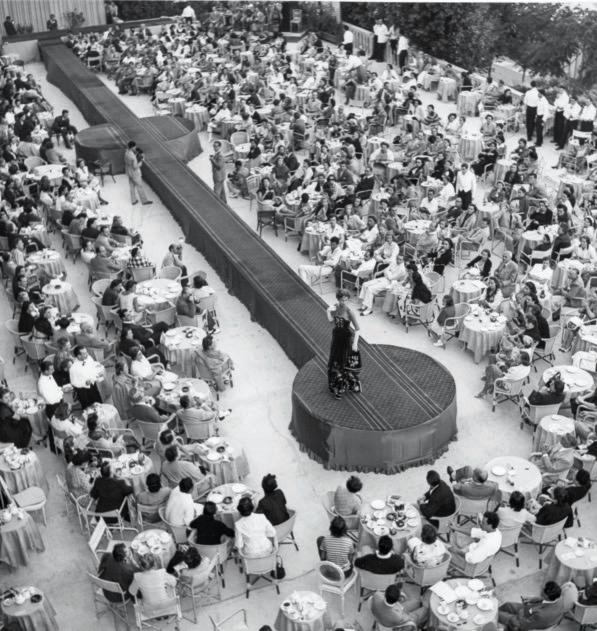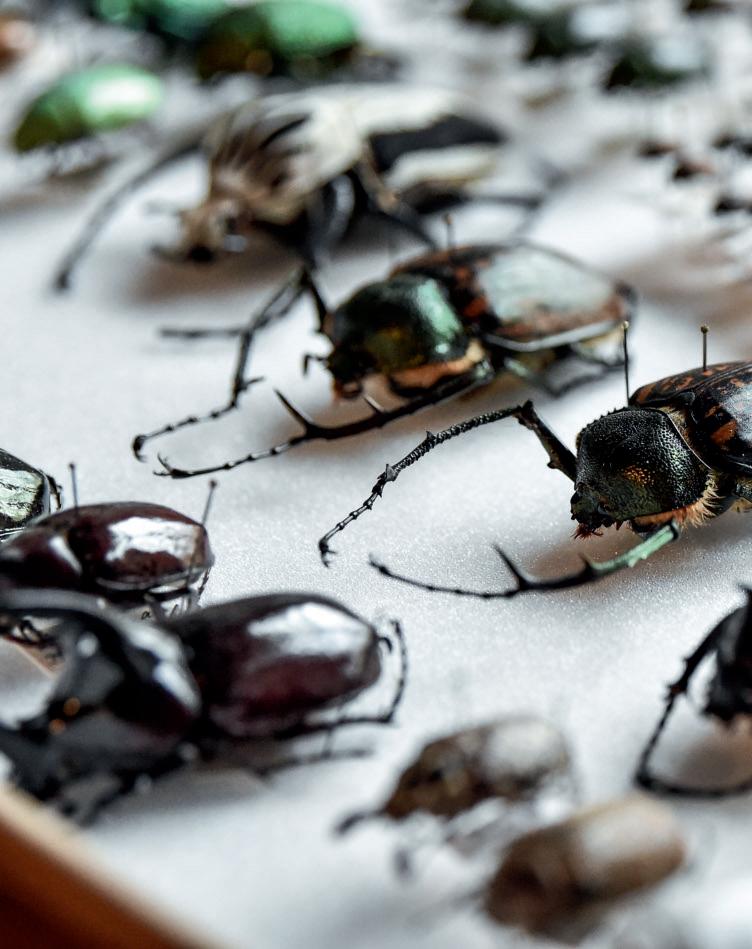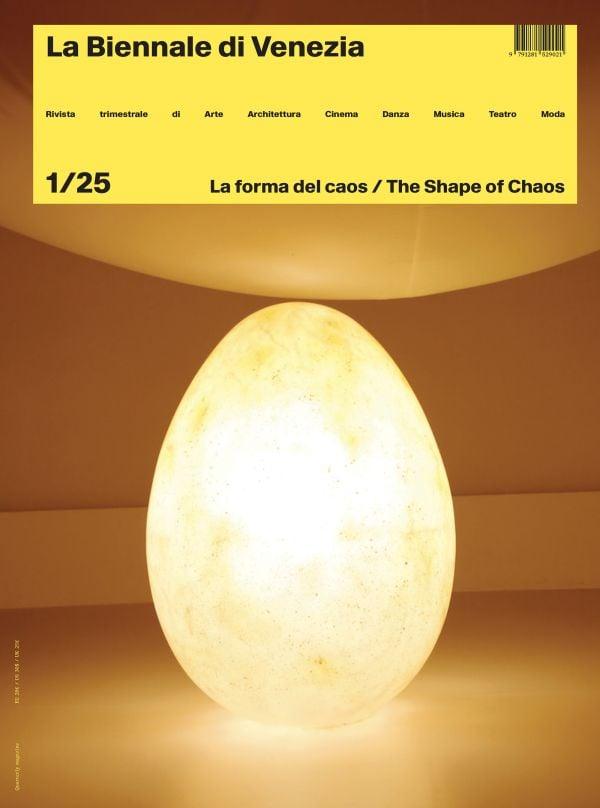
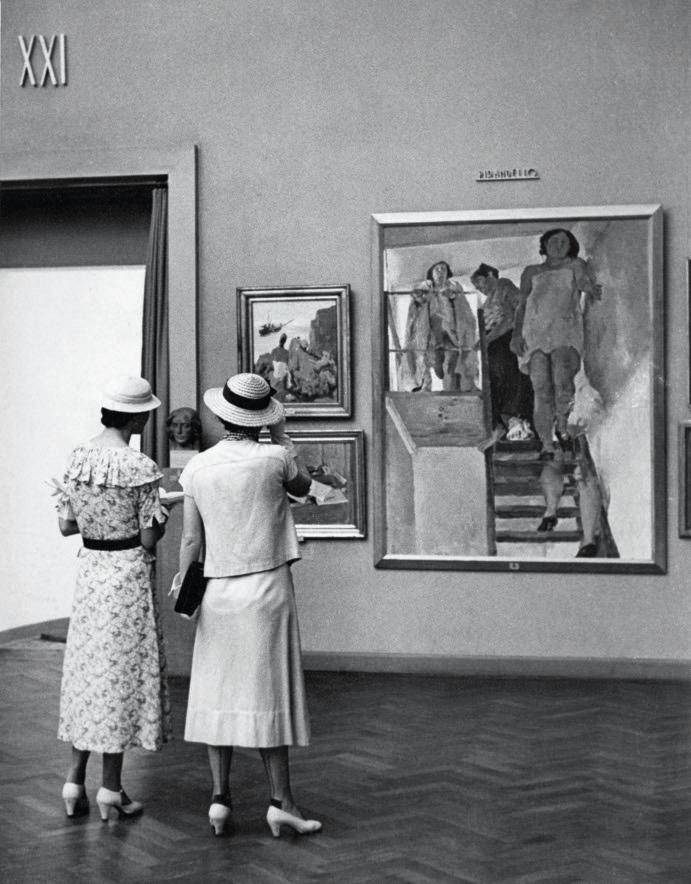
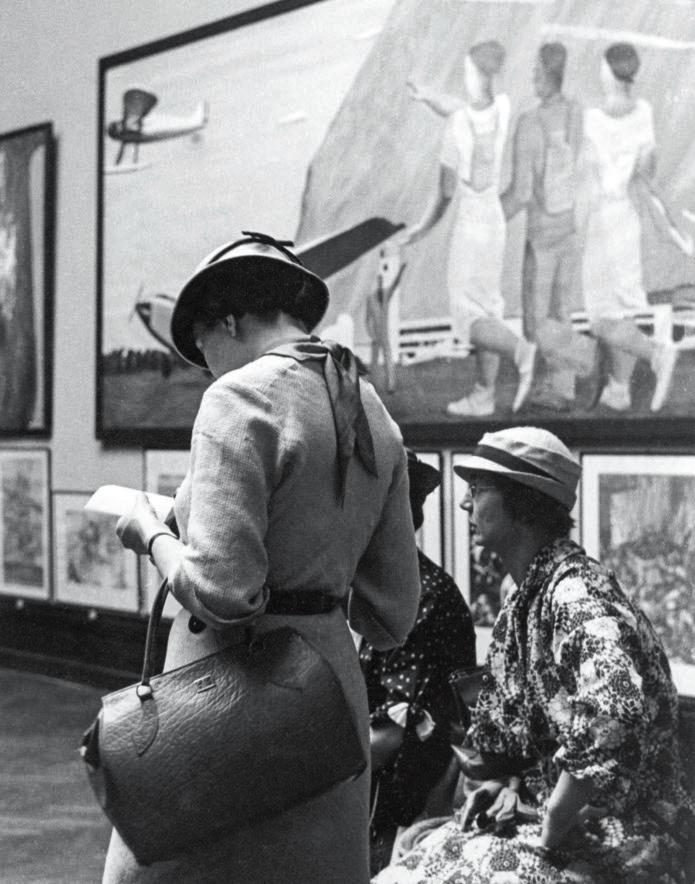
Non al poeta, chiedi all’arconte. Dal greco archeîon, per la triplice latina archium archivum archivium, il “palazzo dell’arconte” – il termine deriva in generale da ἀρχή, dunque dalle “magistrature” in senso lato – presiede all’etimo di archivio, indicando preliminarmente un luogo e un’autorità: magistratura, anziché l’auspicabile magistero. Luogo per conservare e autorità per decretare quel che vada preservato dall’oblio, a uso accertamento. Da principio tutti gli atti, e poi quale ratio discriminerà cosa archiviare e cosa no? Non fiscale ma valoriale, l’accertamento che ci interessa è a monte: questo sì, questo no, la scelta di oggi modella il domani. L’archivio è declinazione culturale e coniugazione temporale: sulla scorta del passato, nel presente, per il futuro. Lungi dall’accezione sentimentale applicata a “una storia”, archiviare non è mettere da parte, ma a parte qualcuno, noi stessi e vieppiù i posteri, di un valore, di un ubi consistam, di una permanenza – figurato, di un’eternità.
L’archivio divelle l’obsolescenza programmata, pianifica la salvezza e l’influenza, dunque la perseveranza: dopotutto, come ci insegna con buona pace di Rossella O’Hara, domani è un altro archivio. Concetto architettonico (palazzo dell’arconte), dunque arredo d’interni mentali, l’archivio ha una facoltà poderosa, persino paurosa, di annichilimento della consecutio temporum: l’archivio è ciò che annulla, ovvero riduce alla voce “classico”, la distanza tra creazione e fruizione. Inverando la contemporaneità dell’opera (del passato) nella coevità dell’utilizzo, l’archivio interseca, perfino assimila, diacronia e sincronia: performando la lettera “desichiana”, dovremmo dire ieri, oggi e domani. E come muoversi dentro il continuum, quale classificazione e soluzione (di continuità)? Se l’archivio si dà quale permanente qui e ora, e di converso ritorno al futuro, l’archivista – figura non già professionale, ma indefettibilmente esistenziale – non preserva tanto il passato, quanto distingue il presente e prescrive l’avvenire. Con questioni, ed esternalità intorno allo zero, da far tremare i polsi: siffatto presente quale enorme, financo tragica responsabilità s’arroga nel risparmiare la vita all’opera?
Pollice alto o verso che sia, il tema è il contesto, il fulcro – ancora una volta – architettonico: accanto al palazzo dell’arconte, s’erge il Colosseo, laddove gli astanti catalizzano a furor di popolo la decisione imperiale, meglio, capitale. L’archiviazione lungi dall’essere arbitraria, osiamo: artistica tout court, recepisce lo Zeitgeist, sussume
il canone, condensa gli umori, riflette la scala di valori, estetici e no, del momento, mettendo in abisso la vocazione maggioritaria: non si certifica la primazia, bensì il consenso. Che, lungi dall’essere categoria dello spirito, è evenienza quantitativa spacciata per sanzione qualitativa: il consenso ha una potenza “ostracistica” e una prassi iconoclastica terribile. Il consenso relega al macero l’eccezione invalidante, l’antitesi confliggente, il re nudo. Terza epifania architettonica, che fa manifestamente una certa impressione, il Salon des refusés, ovvero l’alternativa di sistema – fu Napoleone III a promuoverlo nel 1863. Ogni archivio, meglio, ogni intenzione archivistica dovrebbe annoverare accanto alla teca, accanto al piedistallo, il cestino dei rifiuti e il cestello dei rifiutati, garantendo ai cascami la stessa aspettativa di vita, dunque la medesima conservazione. Serve discernimento, ma non senso comune, che è ineluttabilmente unico: che cosa sarebbe stato di Le Déjeuner sur l’herbe di Edouard Manet, spernacchiato dalla critica ufficiale, ossia dal gusto dominante, se il sovrano, invero “non così ignudo”, non l’avesse apparecchiato altrove, scongiurando il locus desperatus, la corruttela senza rimedio? Quanto la sede fa l’opera, quanto l’allocazione il valore e, rimanendo
a corte ai tempi non perduti dell’arsenal de l’autorité, quanto l’archivio il potere? Archiviare è disporre, tenere dentro o fuori è esercizio del potere sovente imbellettato da esercizio democratico – la consultazione archivistica e quella elettorale non divergono, alla voce rappresentanza. Chi, prima di che, rappresenta l’archivio? Tra auto-documentazione e autofagia, vista e visionarietà, visione e Wunderkammer, quale immagine restituisce, e perché ineluttabilmente del potere – unarchive è dunque concessione al caos o all’affrancamento? Di certo, e lo diciamo con il paternalismo dell’arconte, l’archivio chiede cura umana, curatela editoriale e spietata premura perché non sia mera teca di cristallo, ossia intercapedine tra ieri e domani, tecnica e soggettività, disponibilità e memoria, padronanza e asservimento, ma conservi stato dell’arte e, con il parroco, “stato delle anime” – battesimi, matrimoni e funerali non informano forse il comune percorso di opere e autori? La smaterializzazione, il precipitato del passaggio dall’analogico al digitale, rievoca nel cloud questo stato d’anima, e l’Intelligenza Artificiale affinerà l’intangibilità, consegnando definitivamente l’architettura all’informatica (e alla forma mentis). Dopotutto, domani è un altro archivio.
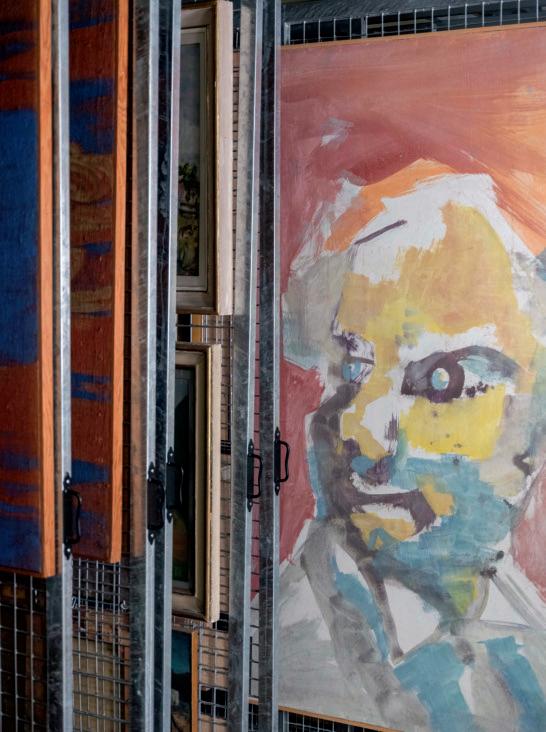
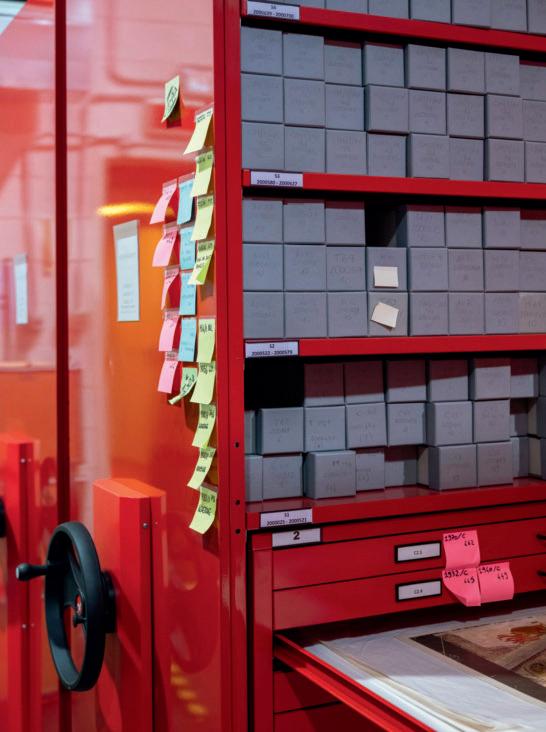
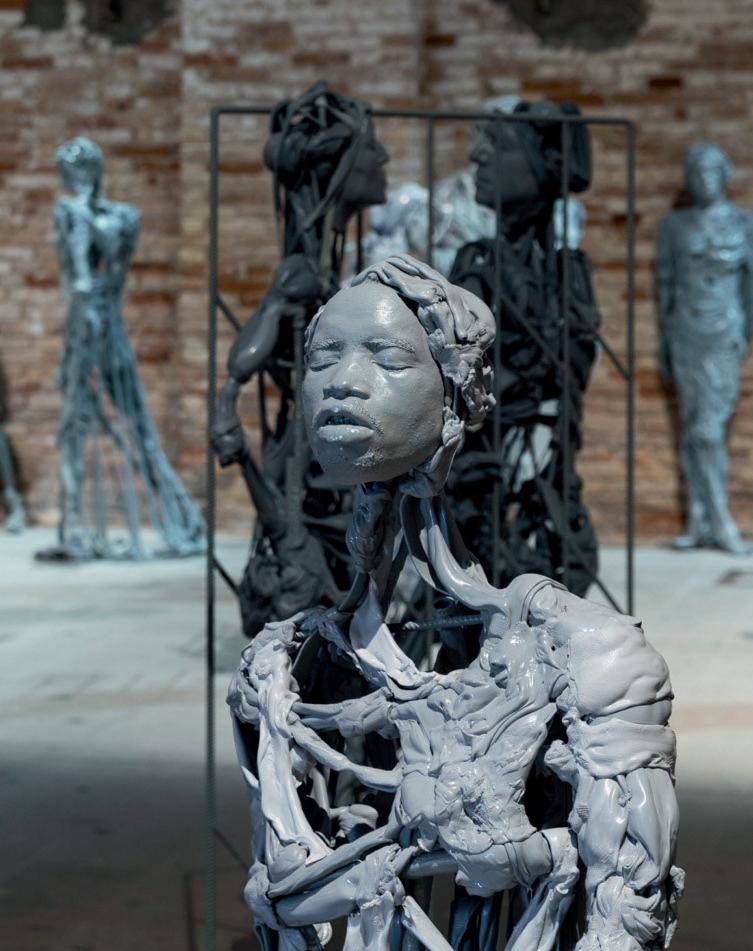
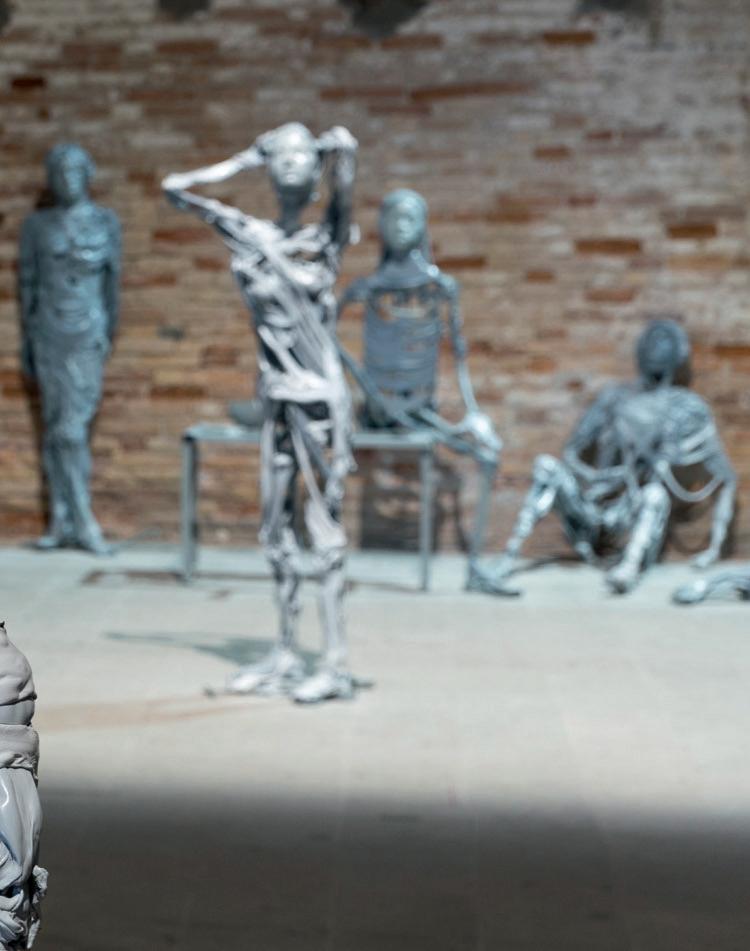


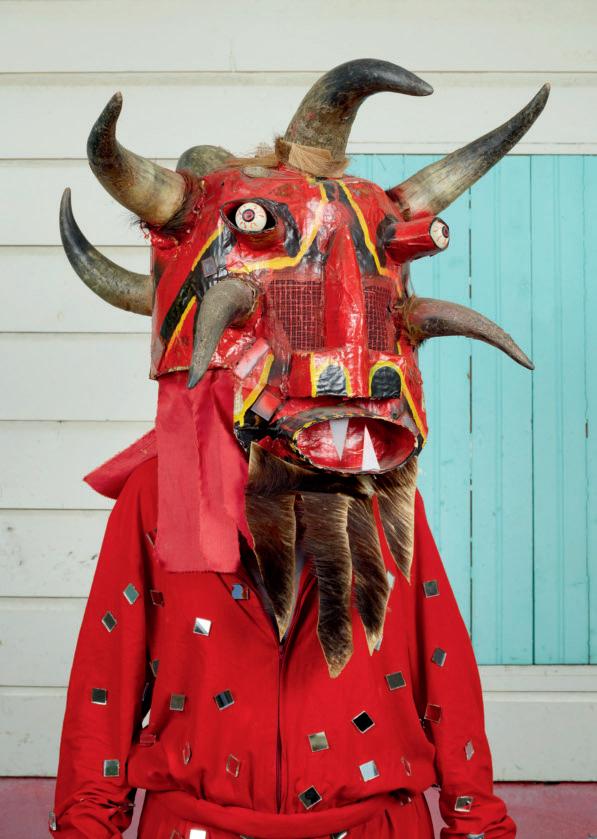
PAROLE DI
MATTEO AL KALAK, storico
IMMAGINI DI
FRÉGER
OVVERO
GLI ARCHIVI,
GLI ARCHIVI
DEL DIAVOLO
Può parere strano – e in effetti lo è – trattare del tema degli archivi in rapporto alle credenze religiose, che forse di archivistico hanno assai poco. In fondo, com’è stato detto, il diavolo non ha bisogno di memoria: grande antagonista di Dio, archetipo dell’Avversario, egli vede le vite degli uomini, scruta gli eventi con un’intelligenza superiore, conosce e sa già ciò che gli esseri umani devono invece credere per fede. Egli vive in una dimensione eterna, dove il tempo si allarga a dismisura (o meglio: senza misura). Difficile dire quanto il prima si distingua dal dopo e quale sia la relazione tra presente, passato e futuro in un luogo a-temporale come l’aldilà
GM: The need to learn every time for the first time is part of human history, both of the species and of the individual, from birth to old age. And this, if on the one hand is an expression of limitation, on the other is perhaps the highest degree of freedom that humans can have, that of building their own brain, and their own mind, by learning, making each of us a unique entity, different from any other, developing throughout life mental faculties that will allow us to reach the highest possible level of intelligence. In the end, we are our limits: the strength of doubt that pushes us to move forward, the strength of imperfection that pushes us to improve ourselves. But there is another fundamental point, Carlo, that you touched on when talking about love, and it is what distinguishes artificial intelligence from human intelligence, the ability to feel emotions. Because we are not just archives, we are also life, and in life emotions are what guides us in everything we do; our whole life is an escape from what scares us and an attraction towards what gives us pleasure. Returning to Calvino’s “World Memory”, we can think that in a large digital archive, lacking emotions, there would also be a lack, as Calvino says, of “what truly exists” and what gives us a thrill, while what would remain would be “the dead part, the shavings, the dross”.
CR: When we conduct an experiment, it is often the unexpected, the mistake, that leads us to the discovery of something new. What will be considered the most significant project of our era, the one that everyone will remember? I think it will be the Internet, but the Internet was not born to do what it then achieved. It began as a game, a dream, a vision: the idea of a few researchers to connect one computer to another, and then another, to facilitate the exchange of information. From that moment, a total revolution began that changed our way of life. The Internet has transformed many aspects of our lives, without having been designed to do so. This is why accidents – the unexpected – are at the basis of the greatest innovations.
SC: With respect to the creative act, therefore, the unexpected and the mistake are the factors, the strengths of human intelligence, of memory—the fact that one can learn from mistakes and open up new worlds and new experiences. And science, as you pointed out, gives us this very important hint. Because what Carlo does – and also what Giulio does in the operating room, when faced with a given surgical scenario for the first time – is a creative act. And with respect to the creative act, how do these two intelligences behave? And how has the creative act supported by these tools changed, if it has changed at all? Does AI, in essence, help the creative act in Carlo’s profession, and how? Does it make him lazy or does it provide more powerful stimuli? And how has the creative act changed in Giulio’s profession?
CR: I’ll try to answer for Giulio and then maybe Giulio will answer for me about architecture. Reflecting on medicine, you can see that an artificial system, like the one used to analyse MRI scans, is much more effective than a human one. Sebastian Thrun, a colleague from Stanford University, has shown in an article in Nature that machines far outperform humans when it comes to examining X-ray scans, although perhaps not that drastically. The strength of the machine lies in the fact that it can access a database of information much larger than the human brain can contain, thus being able to immediately identify the data. However, when it comes to making decisions in unprecedented situations, the machine can get stuck. This is evident with ChatGPT: when we ask it a question to which there are no readily defined answers, what is called a “hallucination” occurs. In these circumstances, human intelligence becomes fundamental. For example, after examining MRI scans, a doctor is faced with a unique, unprecedented case. In this instance, the human brain has the upper hand. This interaction between artificial and human intelligence is fascinating.
GM: I too admire the creations of great architects and I am struck above all by the unpredictable, by what I would not have imagined, by what lies outside the box. We humans are a combination of reason and emotion; the machine, artificial intelligence, acts above all on the basis of a rigid logic guided by an algorithm. It always puts one piece of data after another, and it does so on a probabilistic basis, without ever going outside an order of consecutiveness that is given by everything that has happened
in the past. Human intelligence, on the other hand, seeks the improbable. It seeks “a crack, a crack in everything”, to use Leonard Cohen’s unforgettable words: “that’s how the light gets in”. Now, if we take the Walt Disney Concert Hall in Los Angeles, designed by Frank Gehry, as an example, I don’t think an artificial intelligence could ever have programmed that structure, so to speak, so far outside of any box, which does not follow any canon established in the years that preceded it. Just as it would never
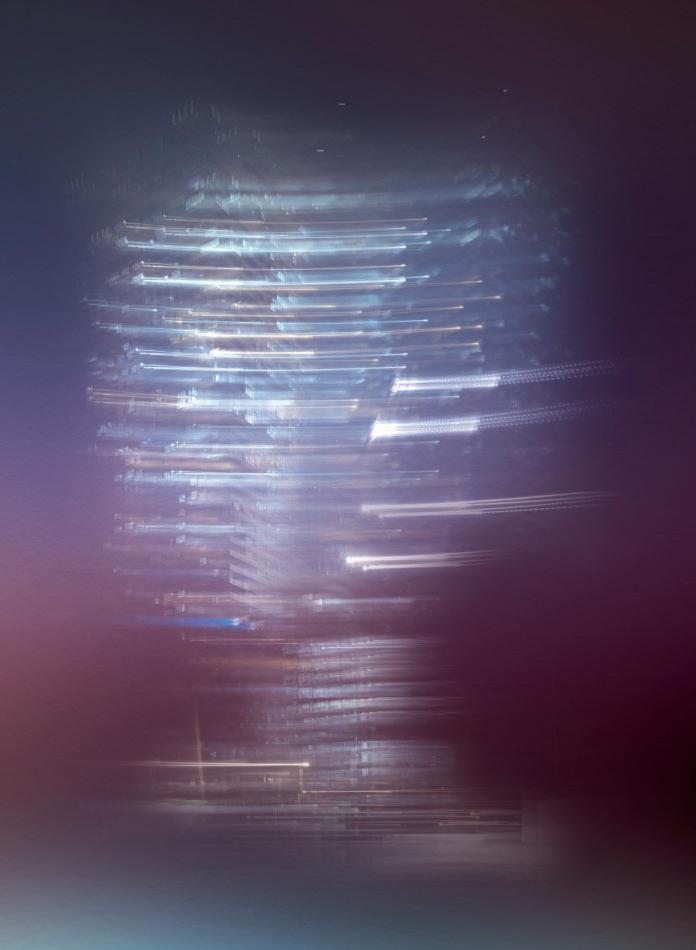


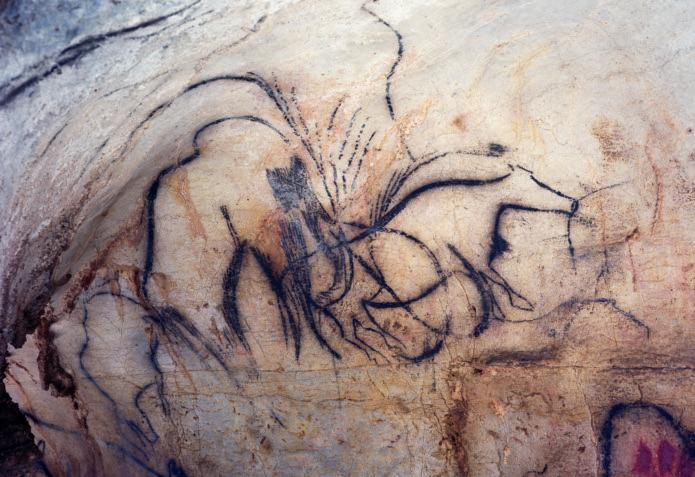

Sau poate că toate formele de artă, de ieri și de azi, înalte și comerciale, cu sens și fără sens, dureroase și analgesice, deștepte și stupide, delicate și grosolane, interpretabile sau doar îngurgitabile au dreptul să existe într-o democrație artistică, într-o nivelare fără limite
Left, above:
Pech Merle, Chapel of Mammoths dx France 2018
137.5 x 170.5 cm
Left, below:
Pech Merle, Chapel of Mammoths sx France 2018
137.5 x 170.5 cm
Next page:
Pech Merle, Horses, Hands, Discs, France 2018
182.8 x 219 cm
Biata banană lipită de un biet zid cu o biată bandă adezivă cenușie de un biet artist, și mâncată de un biet consumator flămând de biată artă - nu este decât un semn al dizolvării în lumea de azi a acelei forme de durere numită sens. Arta nu mai are sens pentru că viața nu mai are sens, pentru că negociatorii care stabileau sensul vieții în alte vremuri negociază acum păgubos și în pierdere. Știm acum că trăim o nanosecundă pe un fir de praf în lumea infinită, și că banana de care tot vorbim este echivalentă cu un Vermeer, cu Divina Commedia, cu Sărutul lui Rodin, cu ce mai doriți. Cu un muc de țigară aruncat pe trotuar. De vreme ce lumea e des-fondată, după expresia lui Vattimo, și toate valorile sunt negociate între oameni, totul este bun, frumos și adevărat și totul, în același timp, e rău, urât și fals. Este indecidabil până la disperare, până la nebunie, până la strigătul unanim al lui Munch, până la ordalie și ecorșeu. Azi trăim într-o lume de banane lipite de ziduri cu bandă adezivă cenușie. Nenumărate romane sunt lipite de ziduri cu bandă adezivă, așteptând să fie înfulecate. Nenumărate opere de artă din galerii sunt lipite de ziduri cu bandă adezivă. Filme, performances, concerte, piese de teatru sunt lipite de ziduri cu bandă adezivă. S-a vorbit de consumerism ca atitudine socială a maselor înspăimântate, ca bulimie de stres, dar același consumerism, poate mai cinic și mai je m’en fichist, se vede astăzi în arte: instalații, cărți, piese muzicale se dizolvă în mediile sociale ca o pastă indiscernabilă de consistența bananei, gata să hrănească nenumărați oameni lipiți de ziduri cu bandă adezivă cenușie.
E conținutul produs de „producătorii de conținut” într-o lume căreia i-a devenit indiferent dacă mai trăiește sau dacă moare. Putem numi asta anomie, haos, resemnare, predare sau abandon. N-are importanță cum o numim. Poate cenușă, poate cenușiul bandei adezive, poate cincizeci de nuanțe de gri. Whatever.
Și acest articol e o banană lipită de zid cu bandă adezivă cenușie. În ora în care l-am scris au murit oameni în sute și sute de alte locuri, sfârtecați de bombe. Ei nu sunt banane lipite de zid. Ei sunt adevărați într-o lume adevărată. Ei sunt adevărul. Ei dau acestei lumi măreție și volum. Ei sunt echivalenții lui Rabelais, ai lui Da Vinci și-ai lui Joyce, care-au scris despre ei și i-au pictat pe pânză. Sunt echivalenții lui Bach, care i-a cântat.
Sau poate mă înșel și nimic nu există, și nici un cuvânt n-are sens. Poate că va izbucni al treilea Război Mondial, și lumea se va stinge în foc și-n scrum. Sau poate că toate formele de artă, de ieri și de azi, înalte și comerciale, cu sens și fără sens, dureroase și analgezice, deștepte și stupide, delicate și grosolane, interpretabile sau doar îngurgitabile au dreptul să existe într-o democrație artistică, într-o nivelare fără limite. Sau poate că fără zisa banană lumea ar fi mai săracă. Sau poate că galeriile de artă, muzeele, Facebook-ul și Instagramul trebuie populate cu ceva, căci capodoperele sunt rare. Sau poate că însuși sensul artei s-a schimbat astă noapte, pe când eu dormeam.
Poate trăim într-o simulare sau în coșmarul altcuiva. Whatever. Whatever.
FUTUROREMOTO
In a time that looks only through a screen, digitally, I have chosen analogue photography and the depth of the cave. Over the past ten years I have sought images that resist the great tsunami of digitisation. I have used photography, the language of the present, to push myself, with a large view camera, towards the very origin of images. Apparently clinical and primitive, my work is actually a reflection on the eye and the mind, on nature and memory. I think that my entire research has always had a relationship with the unfathomable, the unknown, the unfamiliar. Like
cave paintings, my photographs are images in their purest form.
DOMINGO MILELLA (1981) trained in photography with Stephen Shore at the School of Visual Arts in New York City, and now lives between London and Bari, his hometown. His works – deeply influenced by Thomas Struth – have been exhibited in several galleries and museums. Domingo is the recipient of the Royal Academy of Arts Bryan Robertson Trust Award 2023 for furthering his research on image, prehistory and abstraction.
